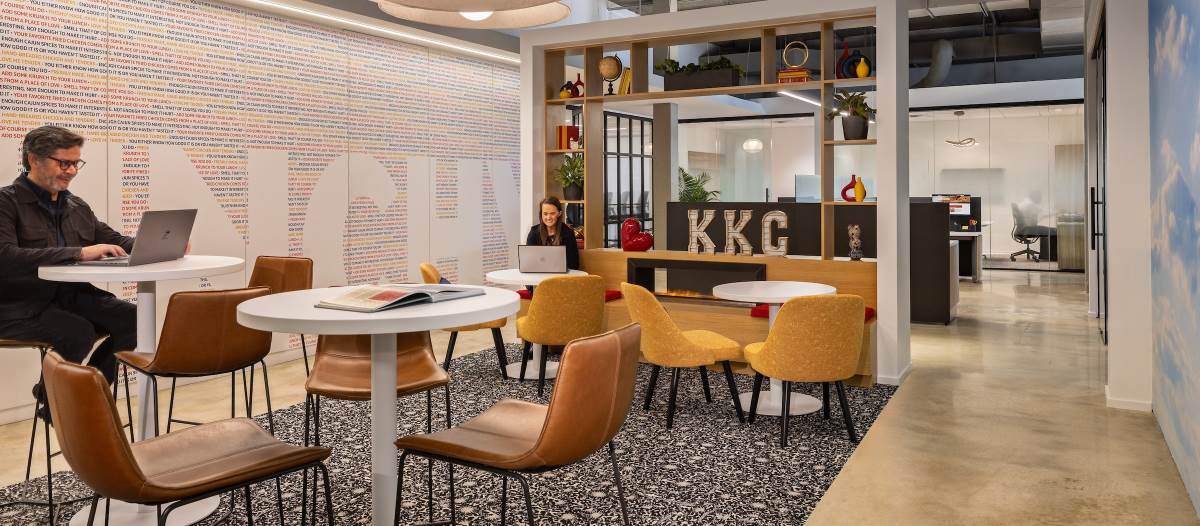Inevitable or Avoidable?
Tackling tensions between deskless & office-based workers

Despite their indispensable contributions, there is growing evidence that the deskless workforce is feeling increasingly overlooked and underappreciated, compared to their office-based counterparts. Recent research from O.C. Tanner revealed that half of deskless workers feel expendable within their organization, whereas office-based workers are not.
Bridging the emerging divide between office-based and deskless workers is one of the most pressing challenges organizations must navigate in the evolving world of work. Left unaddressed, deskless workers will simply exit.
Studies show that deskless worker turnover rate is alarmingly high, with estimates ranging between 100-500 percent on an annual basis. Furthermore, friction between workers can severely undermine employee morale, engagement and company culture.
Ultimately, a cohesive culture is not just a nice-to-have for organizations with mixed workforces; it is critical to their future success. But what can be done to bridge the divide between deskless workers and office-based workers?
Mind the gap
Polling employees across the manufacturing, retail, transportation, hospitality and construction sectors, a recent Perkbox study revealed emerging tensions between deskless and office-based workers.
One of the most significant points of contention between deskless and office-based workers is visibility and presence. According to the study the majority (60 percent) believe that office-based workers have greater status in the business, implying they wield greater influence due to their proximity to strategic discussions and key decisions.
Interestingly, while 65 percent of workers believe deskless employees enjoy greater autonomy in their roles, this flexibility often comes with constraints, such as fixed shifts or on-site demands. On the other hand, office-based employees benefit from nonspecific working locations, such as the ability to work remotely, a factor that 20 percent of workers consider unfair.
Recognition and security also play a significant role in the perceived divide. Office-based employees are seen by the majority (55 percent) of respondents as receiving more recognition for their contributions. Additionally, over half (53 percent) believe that office-based workers have greater job security, while deskless roles can feel more vulnerable to market fluctuations, contracts or seasonal work.
It is easy to think of these differences as simply circumstantial or inevitable given the difference in the location of deskless and office-based employees. However, organizations should not overlook the impact perceived – or real – disparities can have. Tensions between office-based and deskless workers can quickly undermine employee satisfaction, causing fulfilled employees to become unhappy workers.
Research from McKinsey demonstrates that employees who have a positive experience have 16 times the engagement level of employees with a negative experience, and are eight times more likely to want to stay at a company. Here lies the unique challenge for employers with mixed workforces: they need to provide an employee value proposition which speaks to the needs of a broader spectrum of workers. One that is capable of bridging different experiences and ensuring each employee feels seen, appreciated and fulfilled. This is especially important in what continues to be an extremely competitive talent market. As a result, being complacent is not an option for ambitious businesses.
Strategies for bridging the gap
While the divide between deskless and office-based workers may seem inevitable given their different locations, there are clear, actionable steps that organizations should take to tackle the issue and create parity.
1. Clear and consistent communication
The building of a unified workforce starts with communication. For organizations with mixed workforces, it is crucial that information flows seamlessly across all channels.
Regardless of whether employees are in the office, at home or on the shop floor, they should receive the same updates – albeit through different mediums. This might include a combination of physical and digital noticeboards, company-wide emails or regular all-hands meetings.
Additionally, businesses should actively foster opportunities for cross-location collaboration and interaction. This can be as simple as scheduling regular in-person social events where staff can connect outside of the workplace, helping to build a sense of unity across different working environments.
2. Defining and communicating benefits
Many companies already offer a range of benefits designed to support employee well-being, such as car allowances or family care support. However, these are often buried in employment contracts or scattered across various initiatives, making it challenging for employees to understand what is available to them.
It is vital to regularly reiterate the full range of benefits and clearly explain how employees can access them. One effective approach is hosting benefits clinics where staff can ask questions and gain guidance around their needs.
Moreover, if some benefits are not available to everyone, such as flexible working locations, communicating the reasoning behind these decisions transparently can prevent misunderstandings. When employees understand the “why, when and how,” they are more likely to be receptive to changes and less likely to feel overlooked or resentful.
3. Reinforcing company values
Ensuring that employees, no matter where they work, feel aligned with the company’s purpose is crucial. When people believe in what an organization does and why it does it, they are more motivated to perform.
One way to maintain this alignment is by designating local champions in each location — both online and offline. These individuals act as cultural ambassadors, advocating for the company’s values and helping to build a shared sense of purpose among their peers.
4. Recognition across all levels
Recognizing when people live up to company values or do things that are aligned with the company ethos is a huge part of ensuring parity and embedding a unified company culture. However, it is essential that success is celebrated publicly, via tools or channels that share recognition company-wide.
Recognition should not just come from senior leadership. Encouraging peer-to-peer recognition fosters stronger connections between colleagues and creates a more inclusive environment.
This approach also increases visibility of each other’s contributions – especially for those who work in different departments or locations – making it easier for everyone to appreciate the efforts of their colleagues.
5. Personalizing rewards & recognition
That said, rewards and recognition can quickly lose their impact if they are not meaningful to the recipient. It is time to move away from a one-size-fits-all approach. For example, a shopping voucher might be perfect for some, but others might not shop at that store. Similarly, a bottle of champagne might fall flat for those who do not drink.
The solution? Let employees choose their own rewards. By offering personalized options, options ensure that employees feel genuinely valued and appreciated.
6. Encouraging feedback
Creating open feedback channels is critical for shaping a workplace and company culture that works for everyone. Regular employee surveys play an important part in gauging sentiment, but they should be done in a way that captures the views of both office-based and deskless workers, ensuring comprehensive feedback. Anonymous third-party surveys will give employees confidence that their feedback will be confidential.
A unified future
Bridging the divide between deskless and office-based workers is not only possible but essential for the future success of any organization with mixed workforces.
By fostering a culture of inclusion, providing equal opportunities for growth and recognition, and offering meaningful support, businesses can create a workplace where all employees feel equally valued.
As the world of work continues to evolve, the companies that prioritize this parity will be the ones that attract and retain top talent, foster innovation and thrive in a competitive landscape – all of which is critical to long-term success.

Read more on Occupancy & Human Factors , Real Estate and Leadership & Strategy or related topics Workplace Utilization , Relationship and Conflict Management and Communication Management
Explore All FMJ Topics









